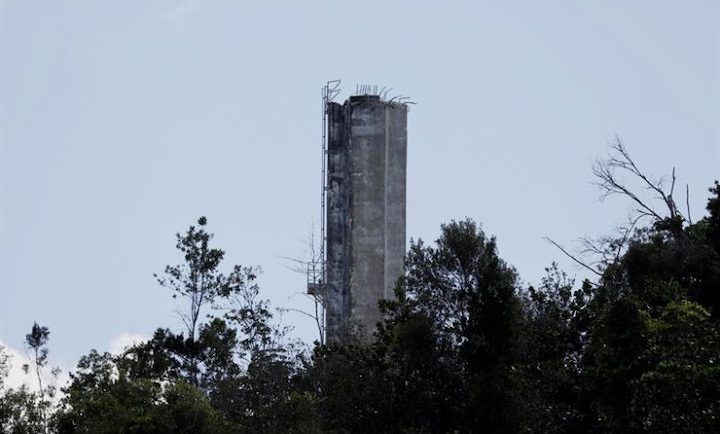30.12.2020

San Juan, Dec 28 (efe-epa).- The Puerto Rican government on Monday announced the allocation of $8 million to rebuild the Arecibo Observatory, one of the world’s largest single-dish radiotelescopes, which collapsed in early December.
The island’s government also declared the Observatory area an “historic zone.”
Via an executive order, Gov. Wanda Vazquez made reconstruction of the observatory public policy.
In a ceremony at La Fortaleza, the seat of the island’s government, Vazquez said that the Puerto Rican government believes that the telescope’s collapse provides a great opportunity to redesign it, taking into account the lessons learned and recommendations from the scientific community so that it remains relevant for decades to come.
She noted that over the past 57 years the installation has achieved worldwide prestige as a research site able to facilitate scientific discoveries and make contributions to astronomy, national security, education and tourism.
Vazquez said that she and her administration want the scope to once again become a world class center and the $8 million being allocated for reconstruction includes funds to repair the environmental damage caused by the collapse, something that has already begun under the supervision of the National Science Foundation (NSF).
The NSF owns the Arecibo Observatory, which is located in northern Puerto Rico.
The Puerto Rican government said that it wants the site to continue being both a scientific and a tourist attraction, receiving as it does more than 100,000 tourists each year.
Vazquez also said that the understanding of her administration is that the US federal government and the private sector will both help with the redesign, reconstruction and operation of the newly revamped Observatory.
At the event where the move was announced, Francisco Cordova, the observatory’s director, said that guidelines had already been prepared regarding how the radiotelescope will be rebuilt.
Since the telescope collapsed, more than 100,000 signatures have been collected on a petition for its reconstruction, a document that will be sent to the White House.
The world-renowned telescope collapsed on Dec. 1, marking the end of an era of scientific research and investigation – as well as tourism – in the US commonwealth.
The telescope’s platform – which was suspended over the huge dish by cables, collapsed due to structural faults that had been detected months ago and had steadily worsened, leading the National Science Foundation recently to announce that the scope would be dismantled.
The structure weighed 900 tons and the reflective dish, built into the concave bowl of a hill, was some 305 meters (1,000 feet) in diameter.
The first of the structural failures occurred last August when one of the cables suspending the platform above the dish broke, and the situation worsened on Nov. 6 when a second cable split, thus severely weakening the structure.
The disappearance of the Arecibo Observatory from the roster of available research locations constituted a significant loss for the world scientific community, given that over the past half century it had contributed to the search for asteroids orbiting near Earth and thus representing a potential threat to the planet and to humanity, enabled scientists to observe exotic deep space objects – including pulsars and distant radio sources – and contributed to Puerto Rico’s tourism earnings.
The scope was even the site of several movies.
Among the landmark accomplishments of the Observatory were detecting the first indirect evidence for gravitational waves in 1974, an achievement that netted a Nobel Prize for the scientists involved, and the discovery of the first planets outside the Solar System in 1992.
Quelle: La Prensa Latina

